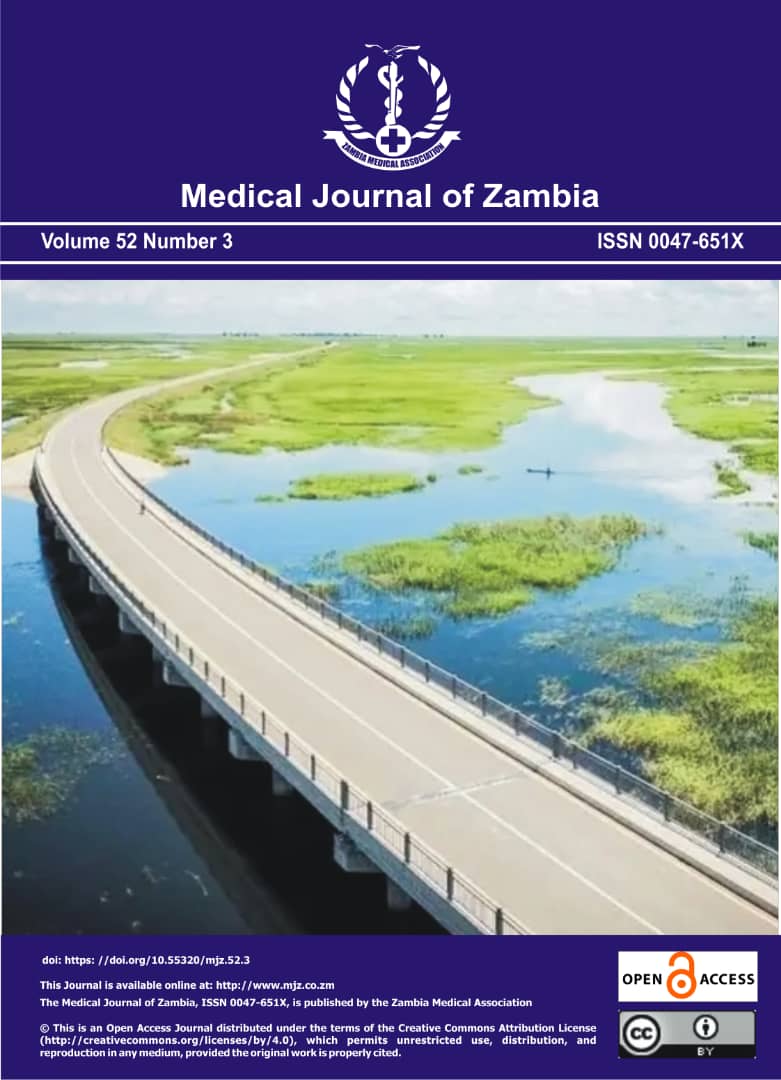Analysis of the loss of Epithelial Cadherin expression in gastric cancer in Zambia
DOI:
https://doi.org/10.55320/mjz.52.3.696Keywords:
Gastric cancer, E-cadherin, ZambiaAbstract
Background: Gastric cancer (GC) is the one of the most common cancers globally and can be classified as diffuse, intestinal or mixed. Epithelial-cadherin (E-cadherin) is a transmembrane glycoprotein which plays a role in maintaining cell shape and extracellular matrix and its loss or reduction has been observed in gastric carcinogenesis. The aim of the study was to determine the proportion of loss of E-cadherin expression in GC.
Methods: Archival formalin fixed paraffin embedded GC tissues and their basic characteristics were retrieved from the histopathology laboratory at the University Teaching Hospital in Lusaka. Sections of the tissue were stained with haematoxylin and eosin to allow for typing of the GC and immunohistochemically stained with an antibody against E-cadherin. Data analysis was conducted using Stata version 15.
Results: We successfully stained 31 archival GC tissues after excluding those not meeting quality checks. Among the samples included, 18 (58%) were from females. The median age was 51 years, IQR 40-68. Overall, 11 (36%) showed loss of E-cadherin expression. Young age was associated with E-cadherin loss (p=0.02). Histologically, 10 (32%) of the GC were of the diffuse type, 18 (58%) intestinal type and 3 (10%) mixed type. E-cadherin loss was significantly higher in diffuse type 7 (70%) than the Intestinal 2 (18%) or 2 (67%) the mixed types (p=0.003). In multivariable analysis, the difference remained significant (p=0.041). The proportion of E-cadherin loss was higher in tumours located in the cardia, 57%, when compared to those that were non-cardia in location, 29%, but the difference was not statistically significant [OR 3.2; 95% CI 0.4-27, p=0.21].
Conclusions: Loss of E-cadherin expression is associated with a younger age at diagnosis and with diffuse type gastric cancer. Results from this study could contribute toward patient prognostication and possibly influence therapeutic choices for GC patients in Zambia.
Downloads
Downloads
Published
Issue
Section
License
Copyright (c) 2025 Medical Journal of Zambia

This work is licensed under a Creative Commons Attribution-NonCommercial 4.0 International License.









